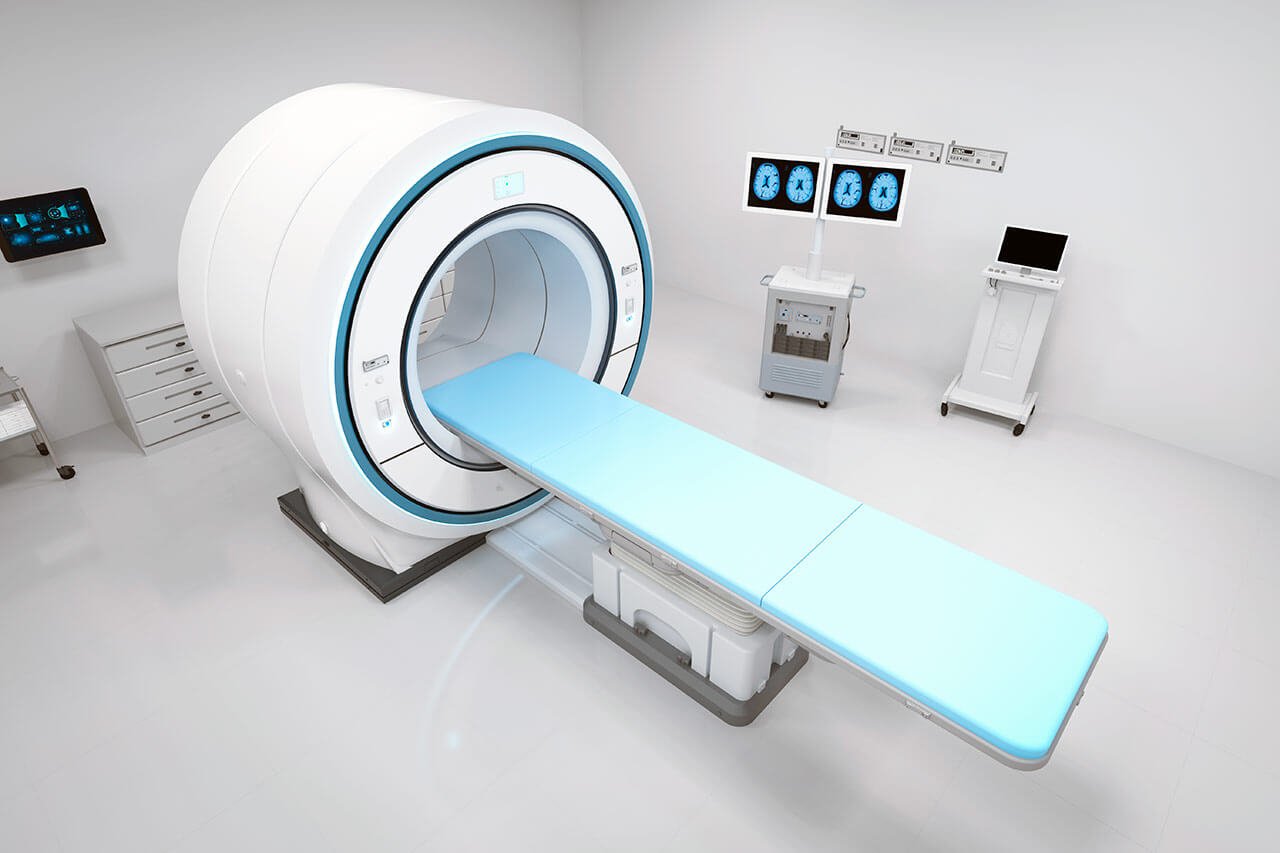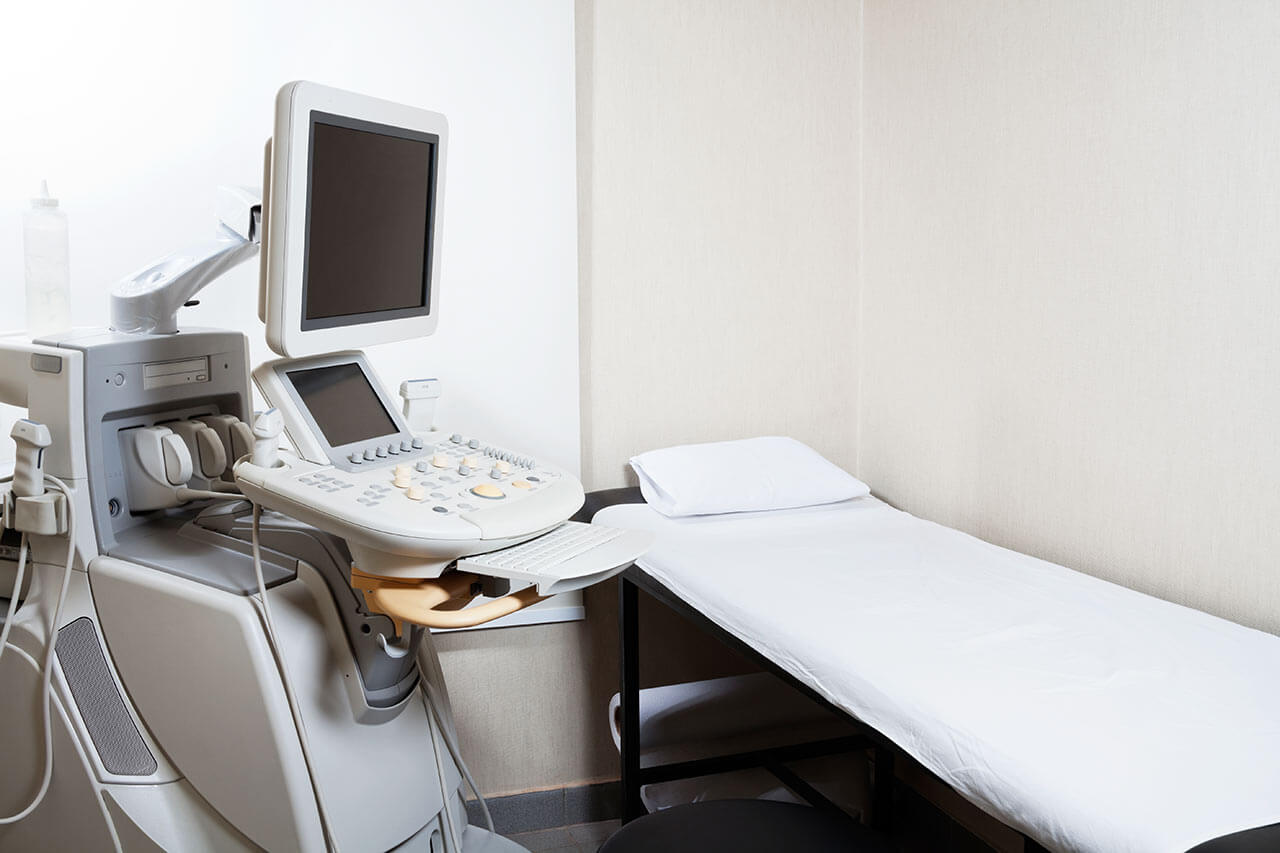
About the Department of Adult and Pediatric Radiation Therapy at University Hospital Ulm
The Department of Adult and Pediatric Radiation Therapy at the University Hospital Ulm performs all modern types of radiation therapy for benign and malignant tumors in adults and children. Cancer treatment is the key focus of the department's clinical practice. The department is the largest medical facility specializing in radiation therapy in the region and one of the leading ones in Germany. More than 1,600 patients are treated here every year. In most cases, radiation therapy is performed on an outpatient basis. The health facility has 20 beds for the hospitalization of patients. The department’s specialists work with state-of-the-art equipment, such as the Varian TrueBeam 2.7 linear accelerator with HyperArc technology and multi-blade collimator, the Halcyon Varian linear accelerator, the RayPilot system for stereotactic irradiation of the prostate gland, the Philips Brilliance CT Big Bore scanner, the Varian Eclipse radiation planning system, the Varian Bravos brachytherapy device, the Zeiss INTRABEAM device for intraoperative radiation therapy, and many others. Of particular interest is the treatment of prostate, breast, ovarian, cervical, and bladder cancers, head and neck tumors, and malignant neoplasms in children. The department performs over 100 stereotactic radiation procedures annually for brain and bone metastases, lung cancer, and prostate tumors. The department is an integral part of the Comprehensive Cancer Center Ulm (CCCU), where physicians specializing in the treatment of cancers of various localizations work hand in hand. This collaborative approach allows the doctors from related disciplines to jointly elaborate comprehensive treatment regimens tailored to the individual needs of each patient.
The department is headed by Prof. Dr. med. Thomas Wiegel. He has more than 30 years of successful clinical experience in cancer treatment using radiation therapy. Prof. Wiegel worked for a long time in the Department of Radiation Therapy at the Charite University Hospital Berlin, a world-renowned medical center with an excellent reputation. He has deep knowledge and invaluable experience in performing all modern types of radiation therapy, devotes much of his time to research activities, and regularly speaks at medical conferences in Germany and abroad, happily sharing his experience with colleagues.
Intensity-modulated radiation therapy (IMRT) is one of the most popular types of irradiation. This high-precision method of radiation therapy is most often used to treat prostate, lung, brain, and breast cancer, as well as head and neck tumors. The IMRT technique allows the radiation dose to be optimally distributed throughout the tumor while minimizing the impact on surrounding tissues. During this radiation therapy, the irradiation area is divided into many small segments. Each of them is irradiated separately with varying intensity. High-energy radiation is targeted at the malignant tumor with millimeter precision without affecting adjacent healthy tissue. Such a sparing effect and concentration of radiation on the cancer focus are achieved due to multi-blade collimators built into the linear accelerator.
The department's doctors also carry out volumetric modulated arc therapy (VMAT), which is an advanced method of IMRT radiation therapy. The principle of action of this type of radiation therapy is almost identical to intensity-modulated radiation therapy. The only difference is that it uses a radiation source that rotates around the patient's body. Specialists can thus irradiate the tumor from any angle while delivering a high dose of radiation to the target area extremely quickly (the VMAT procedure takes only 3-5 minutes). During irradiation, the doctor can adjust the intensity and direction of the rays so that nearby healthy tissue is not damaged.
Intraoperative radiation therapy (IORT) is offered to women with breast cancer. The department's radiation therapists have been using this treatment method in collaboration with breast specialists since 2010, so they are deservedly proud of their wealth of experience in this field. The IORT radiation procedure is carried out directly during the tumor removal surgery. A high dose of radiation is directed at the tumor bed immediately after tumor removal. Such an approach allows the doctors to destroy atypical cells remaining after resection. Intraoperative radiation therapy makes it possible to significantly reduce the number of sessions of external beam radiation therapy after surgery and, in some cases, eliminate them completely.
The department's doctors are also competent in brachytherapy. This is an internal method of radiation therapy, during which the source of radiation is placed using a special applicator in close proximity to the tumor or inside it. Due to this, specialists can target the cancer focus with a high dose of radiation without harming healthy adjacent tissues. The department's radiation therapists most often perform intracavitary brachytherapy, during which the radiation source is inserted into the natural body openings to irradiate the tumors located in them. Brachytherapy takes a few minutes and can be performed on an outpatient or day-care basis. Local or general anesthesia may be used during the procedure, if required. The department's specialists provide brachytherapy for tumors of the vagina, uterus, upper esophagus, and respiratory tract.
The medical facility also successfully performs stereotactic radiosurgery, a precise irradiation using a three-dimensional coordinate system. Stereotactic irradiation is indicated for patients with brain tumors and metastases. This method is also used to treat prostate cancer, lung cancer, lung metastases, and solitary bone metastases. During stereotactic radiation therapy, the tumor is exposed to a high dose of radiation in a single session. Sometimes the necessary dose of radiation may be delivered in fractionated sessions over several days.
Since 2019, the department's doctors have been performing stereotactic irradiation of brain tumors using the innovative HyperArc technology. This system makes it possible to significantly reduce the radiation session duration (it lasts only 15 minutes), as well as to perform the simultaneous irradiation of several cancer foci rather than just one tumor, as in classical radiosurgery. More than 50 stereotactic irradiation procedures using HyperArc technology are performed in the department every year.
The department's radiation therapists are also among the pioneers in Germany in the field of stereotactic radiation therapy using the advanced Ray Pilot technology for treating prostate cancer. This treatment method has been successfully performed here since March 2021. When using the Ray Pilot technology, the patient requires only 5 irradiation sessions instead of 30-35, which are carried out every other day. During the treatment period, a catheter with a non-ionizing electromagnetic transmitter is inserted into the urethra to monitor real-time intrafractional movements of the prostate. The data obtained is used to optimize the radiation dose, which allows for a reduction in the duration of irradiation from 7-8 weeks to 5 sessions in 10 days. The effectiveness of stereotactic radiation therapy using the Ray Pilot technology for prostate cancer treatment is comparable to the results of classical radiation therapy.
The department's range of therapeutic services includes the following:
- Intensity-modulated radiation therapy (IMRT)
- Volumetric modulated arc therapy (VMAT)
- Intraoperative radiation therapy (IORT)
- Atemgating irradiation procedure for breast cancer
- Brachytherapy
- Total body irradiation (before a bone marrow transplant)
- Combined radiotherapy and chemotherapy
- Stereotactic radiation therapy, including innovative HyperArc and Ray Pilot technologies
- Other types of radiation therapy
Curriculum vitae
Higher Education and Professional Career
- Since 2005 Head Physician, Department of Adult and Pediatric Radiation Therapy, University Hospital Ulm.
- 2001 - 2005 Professor, Department of Radiation Therapy, Charite University Hospital Berlin.
- 1999 Habilitation and Venia Legendi in Radiation Therapy, Faculty of Human Medicine, Free University of Berlin.
- 1996 - 2005 Managing Senior Physician, Department of Radiation Therapy, Charite University Hospital Berlin.
- 1995 - 1996 Senior Physician, Department of Radiation Therapy, Charite University Hospital Berlin.
- 1994 - 1995 Research Fellow, Department of Radiation Therapy, Charite University Hospital Berlin.
- 1989 - 1994 Intern, Assistant Physician, Department of Radiation Therapy, University Hospital Hamburg.
- 1989 - 1991 Residency, Department of Radiation Therapy, University Hospital Hamburg.
- 1990 Thesis defense.
- 1989 Doctoral degree.
Photo of the doctor: (c) Universitätsklinikum Ulm






